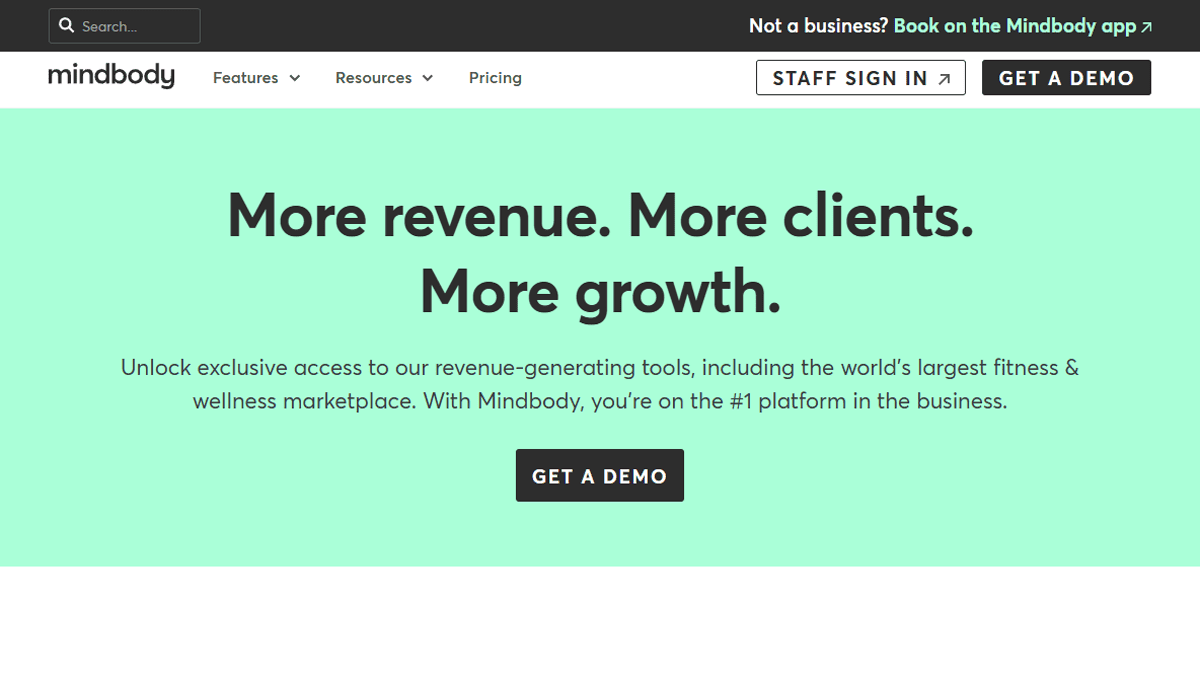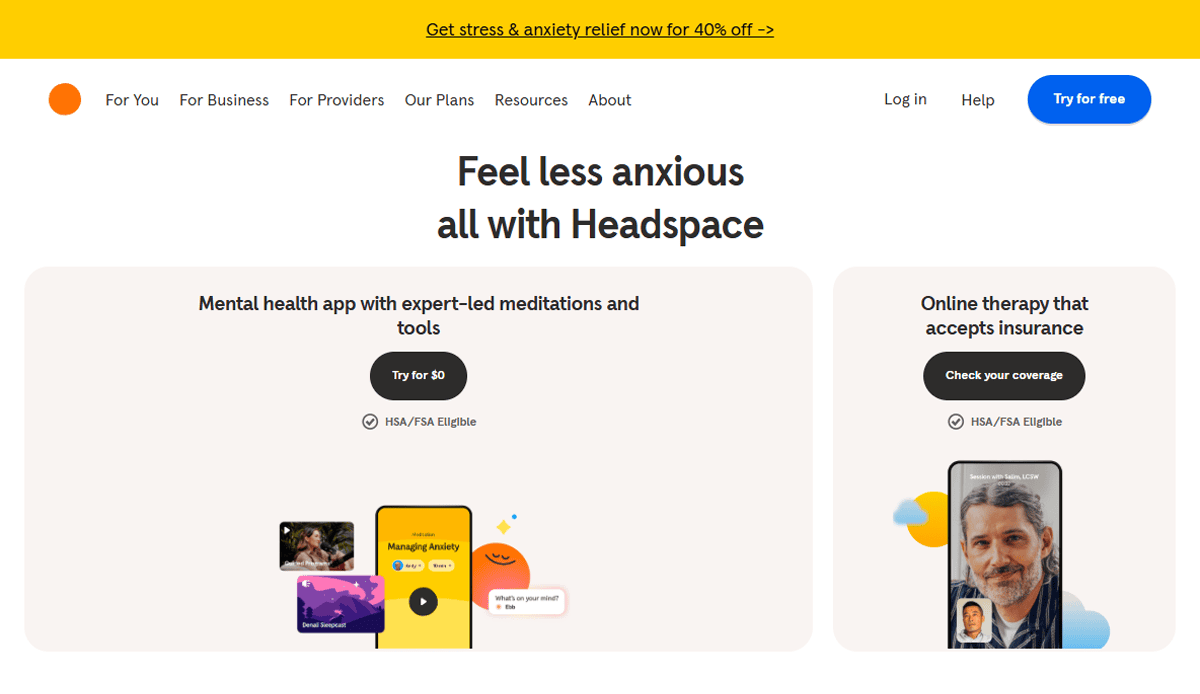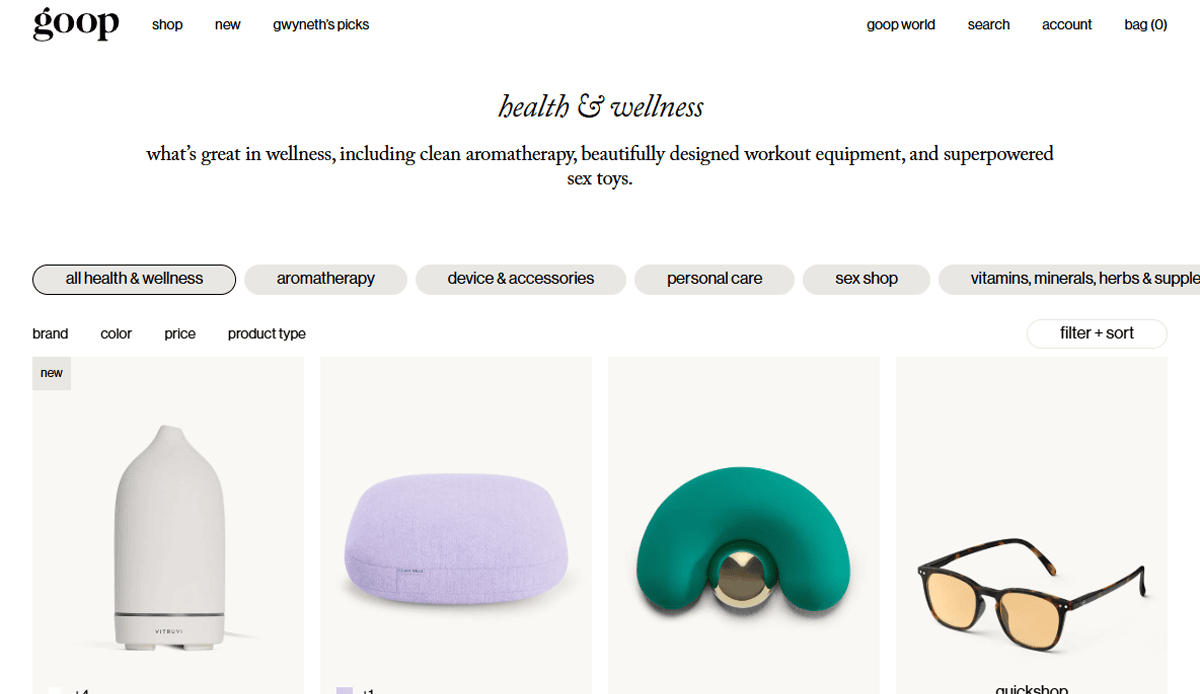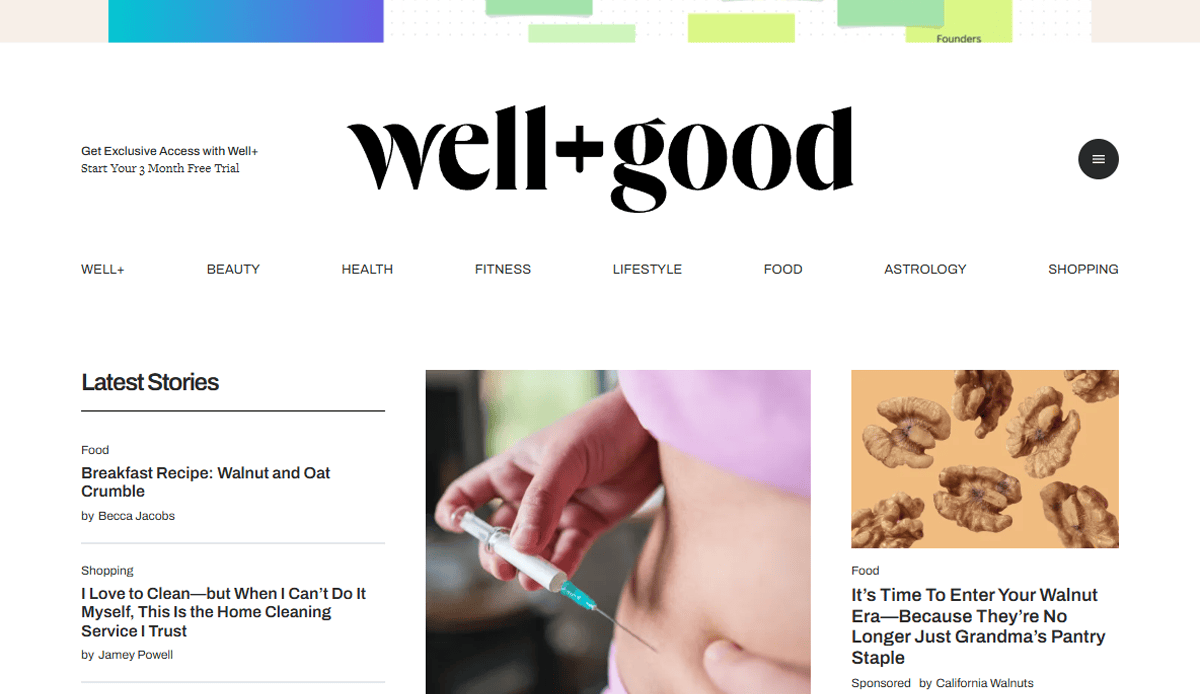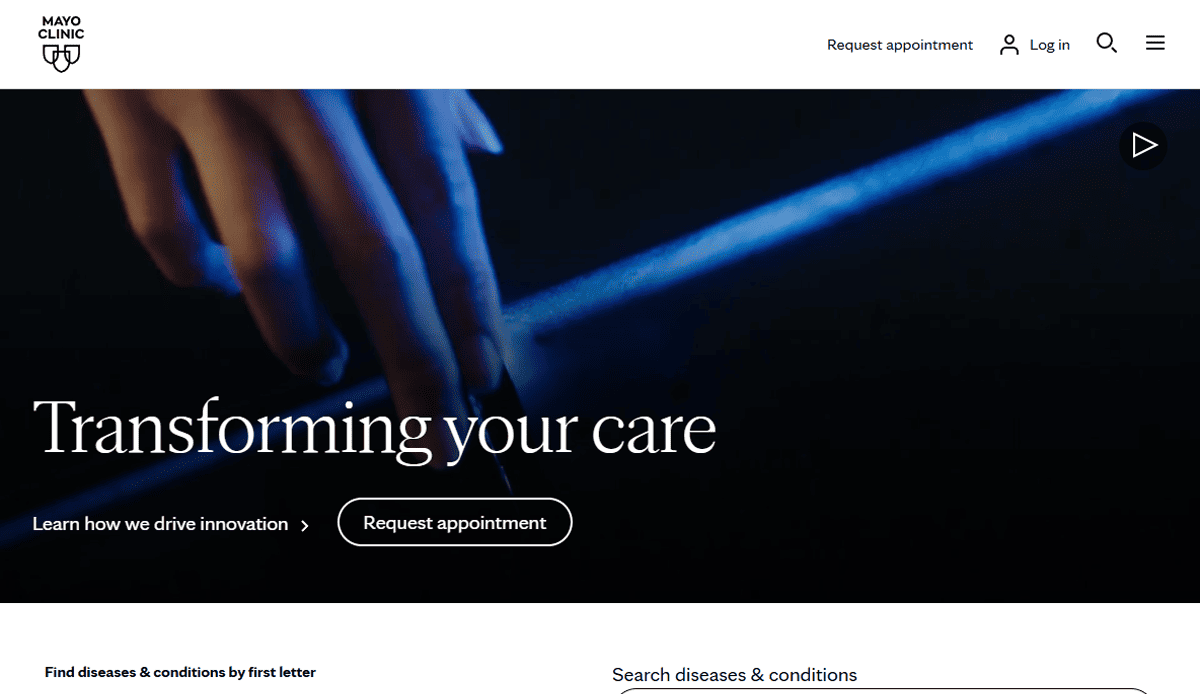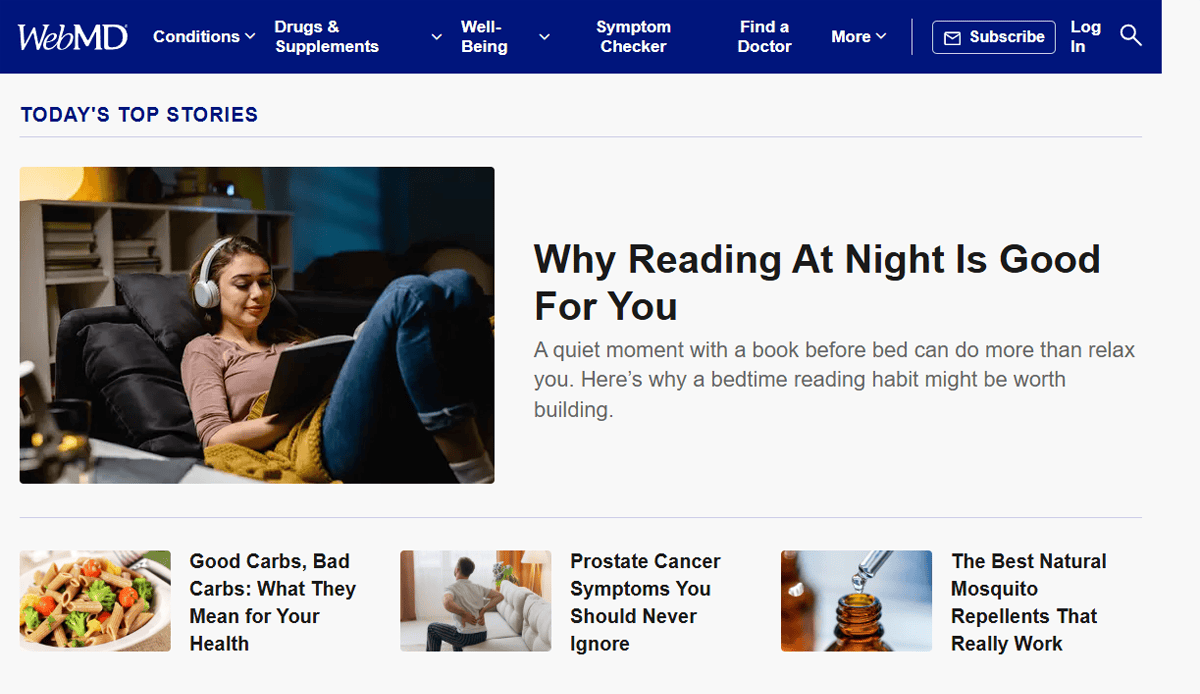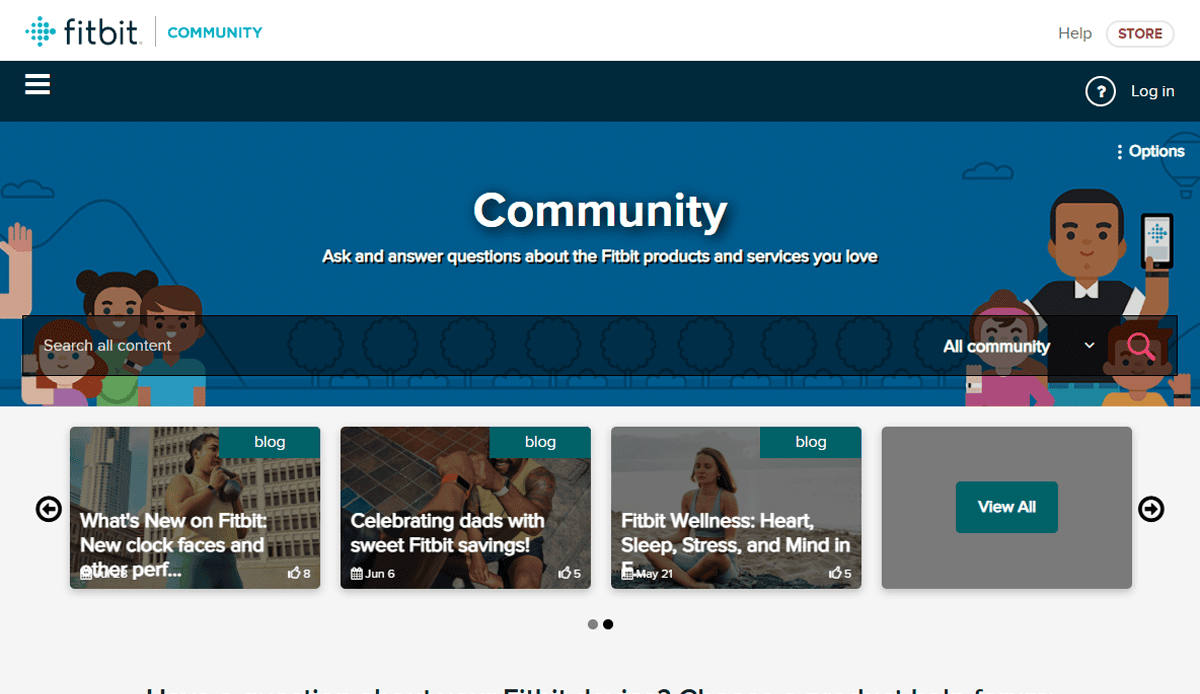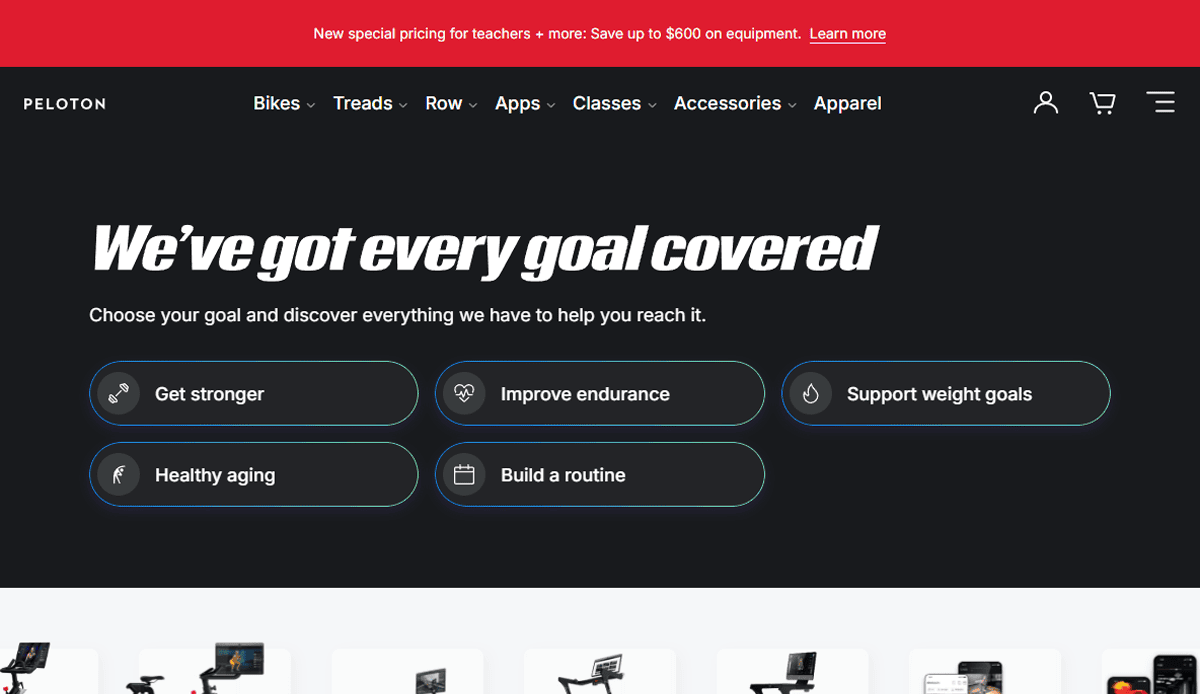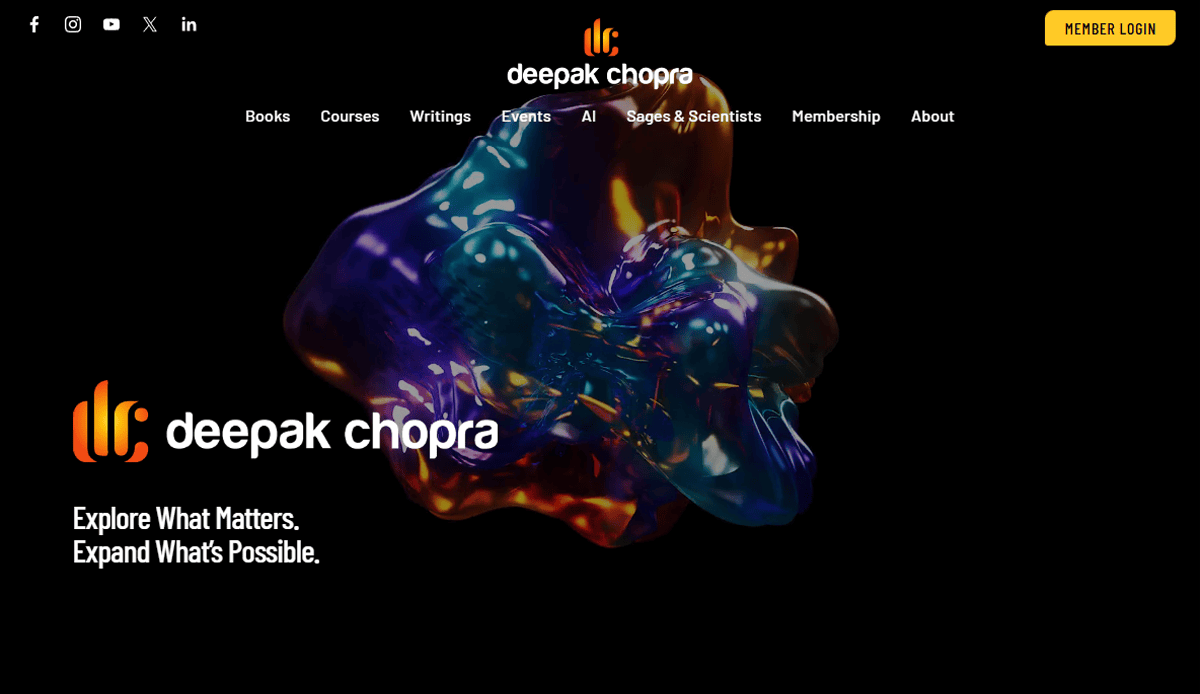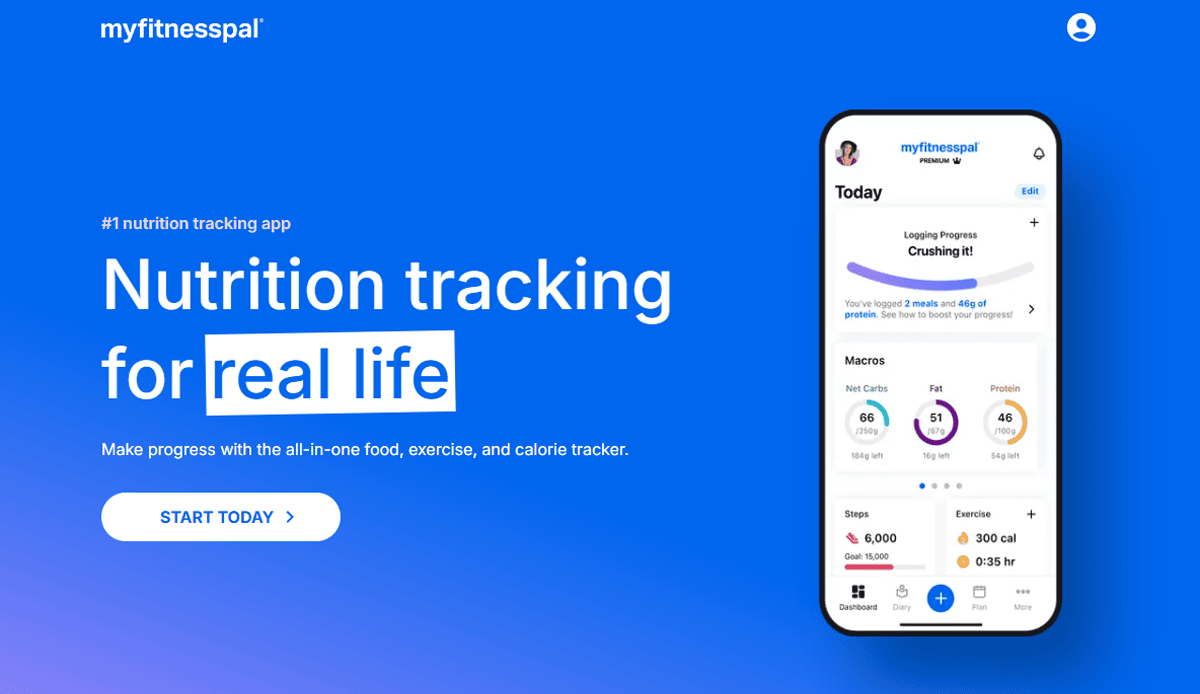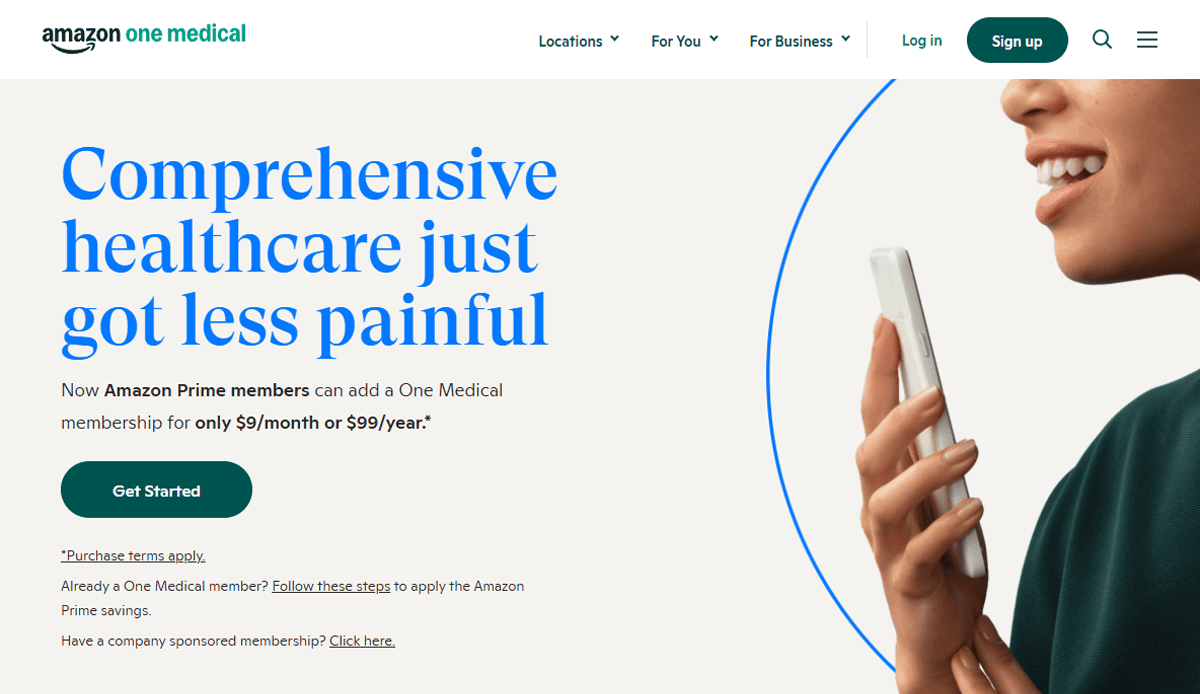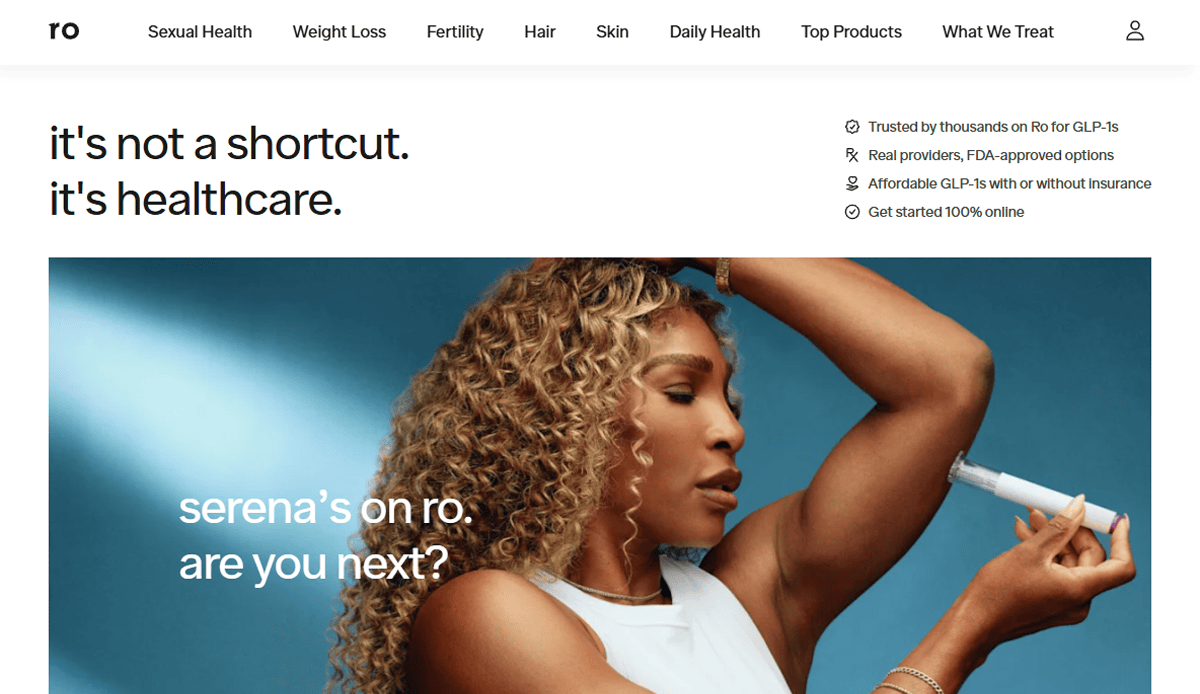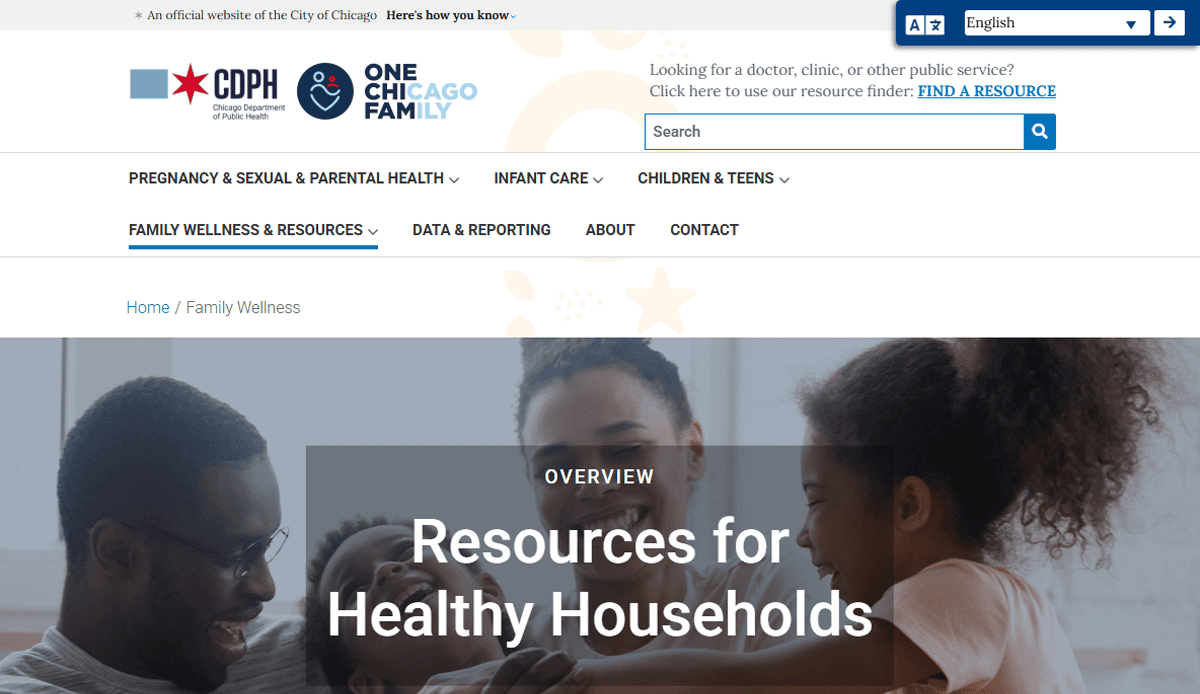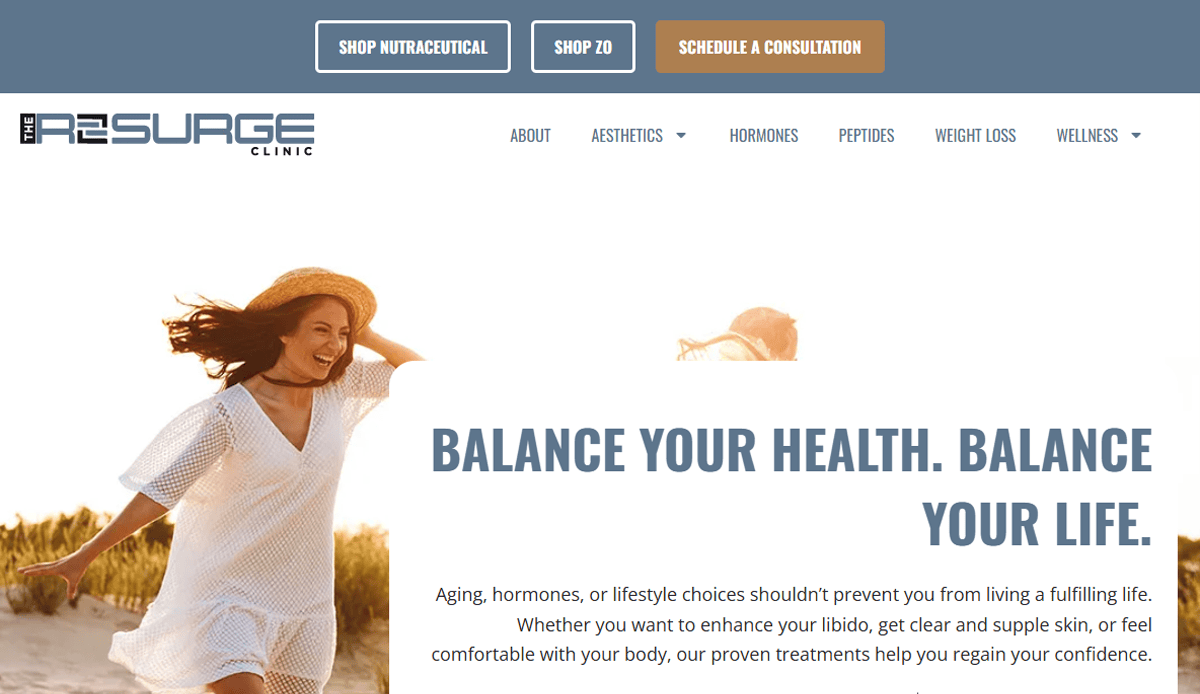Just looking for our Best Health & Wellness Website examples list?
Building a Health & Wellness Site That Drives Real Results
Today, your business lives and breathes through its digital presence. But let’s be honest: how many times have you clicked away from a wellness website because it felt clunky, outdated, or simply didn’t inspire confidence? If your own site isn’t actively working to attract and convert prospective clients, you’re missing out on far more than just aesthetics.
Many health and wellness professionals view website design as a checkbox item – something to look good, perhaps. They might focus on a soothing color palette or an elegant font, believing that a visually appealing site alone will do the trick. While a beautiful design certainly helps create a sense of calm and professionalism, the truth is, a truly high-performing site is a strategic powerhouse, designed to drive tangible business results.
This isn’t just about static pages; it’s about creating a seamless user experience that guides visitors effortlessly. It’s about intuitive navigation that simplifies finding information, making appointments, or engaging with your services. It’s about optimizing for all mobile devices and ensuring your brand message resonates deeply. At our full-service digital marketing agency, we understand that exceptional health and wellness website design goes beyond the superficial. It’s about leveraging every element, from print style to interactive features, to establish trust and transform casual visitors into loyal clients. This guide will highlight the hidden ROI of smart web design, revealing how a strategic approach can become the silent, powerful engine of growth for your entire business.
Website Planning & Purpose: Laying the Foundation for Wellness Success
The planning phase is arguably the most critical stage in site design. It’s where we move beyond simply envisioning a beautiful presence online and instead focus on establishing a clear, strategic purpose for your digital platform. For a wellness business, this initial phase is particularly vital because it directly impacts your ability to establish trust, attract new clients, and ultimately, drive your business forward.
Our approach to website planning for the health and wellness industry is deeply collaborative and data-driven. We begin by understanding the unique essence of your brand and your specific goals. This isn’t just about what services you offer, but how you want to be perceived, who your ideal client is, and what actions you want them to take on your site.
Key components of the planning phase include:
- Defining Your Purpose and Goals:
- What is the primary objective of your website? Is it to increase online sales for appointments? To sell digital wellness courses? To provide a comprehensive resource hub for patients? To establish thought leadership in a niche? Clearly defined goals inform every subsequent design and development decision.
- Who is your target audience? Understanding their demographics, psychographics, pain points, and motivations is crucial. Are they seeking immediate solutions to health issues, or are they looking for long-term wellness guidance? This understanding directly influences the tone, content, and features of your site.
- Brand Discovery and Messaging:
- We delve into your unique selling proposition: What makes your business stand out?
- How can your web design visually communicate your values, expertise, and the relaxing or professional atmosphere you want to evoke? This involves considering the right color palette, fonts, and imagery that resonate with your brand identity. The goal is to make visitors feel understood and safe.
- Content Strategy and Information Architecture:
- Before a single line of code is written, we map out the entire user journey. What information do visitors need at each stage? How can we streamline complex health information into digestible content?
- This involves planning the pathway structure to ensure it’s intuitive and logical, allowing users to find what they need with ease. A well-planned information architecture is critical for both user experience and SEO. It ensures that services, practitioner profiles, reviews, and educational resources are seamlessly accessible.
- Feature Prioritization and Technical Requirements:
- What functionalities are essential for your wellness website design to meet your goals? This could include secure online booking systems, client portals, telehealth integration, e-commerce capabilities for products, or interactive symptom checkers.
- We also consider technical requirements like responsiveness across all mobile devices, security protocols (especially vital for health and wellness data), and possible integrations with existing patient management systems.
By meticulously executing this planning phase, our agency ensures that your website is not merely a pretty face but a robust, purpose-built platform engineered to support your business objectives, foster trust, and ultimately drive sustainable growth. It’s about building a digital asset that works as hard as you do, transforming your digital presence into a powerhouse.
Design Principles: Crafting an Effective Website
Effective website design transcends aesthetics; it’s about crafting a digital environment that inspires trust, simplifies complex information, and fosters genuine connection. We adhere to several core design principles specifically tailored for the health industry to ensure your digital presence truly serves your prospective clients and business goals.
- Clarity and Simplicity above All:
- Reduce Clutter: The journey to better health can often feel overwhelming. Your website should be a relaxing, not confusing, space. We advocate for clean layouts, ample white space, and a minimalist approach that allows key information to breathe.
- Intuitive Navigation: A well-structured design is paramount. Users should never feel lost. Clear menus, logical categorization of services, and easily accessible contact information are non-negotiable. The goal is to smooth out the user’s path from curiosity to conversion, whether they’re reserving an appointment or exploring resources.
- Direct Messaging: Use concise, benefit-driven headlines and body copy. Avoid jargon where possible, or provide clear explanations for medical or technical terms.
- Trust-Building Visuals and Tone:
- Authenticity and Professionalism: High-quality, authentic imagery is crucial. Stock photos can feel impersonal. Showcase real practitioners, genuine smiles, and a professional yet approachable atmosphere. The visuals should align with your brand and evoke feelings of peace, competence, and empathy.
- Color Palette and Typography: The chosen color palette should reflect the healing or invigorating nature of your services. Soft blues, greens, and natural tones often evoke a sense of calm and well-being. Complementary letter choices for headlines and body text enhance readability and subtly reinforce your brand’s personality, whether it’s authoritative or gentle.
- Testimonials and Social Proof: Strategically placed client reviews from satisfied clients are powerful trust-building tools. They provide authentic validation of your services and expertise.
- Exceptional User Experience (UX) and Responsiveness:
- Mobile-First Design: Given that a significant portion of internet traffic comes from smart devices, your site must be flawlessly responsive. This isn’t just about shrinking content; it’s about optimizing the experience for smaller screens, ensuring easy touch navigation and fast loading times.
- Seamless Interaction: Every interaction, from filling out a contact form to navigating service pages, should feel effortless. This includes streamlined appointment scheduling systems, easy access to patient portals, and clear calls to action (CTAs). A flowing experience encourages engagement and reduces abandonment rates.
- Accessibility: Consider accessibility for all users, including those with disabilities. This means using appropriate font sizes, color contrasts, and alt text for images to ensure your vital health information is available to everyone.
- Strategic Use of Content and Functionality:
- Educational Resources: Position your website as a valuable resource. Blogs, FAQs, and articles on relevant topics demonstrate your expertise and attract organic traffic through SEO.
- Clear Calls to Action (CTAs):Guide visitors to their next step with prominent and clear CTAs. Whether it’s “Schedule Your Consultation,” “Download Our Free Guide,” or “Learn More About Our Services,” ensure they stand out and convey immediate value.
- Secure and Private: Data security and patient privacy are paramount. Your web designer must implement robust security measures and clearly communicate your privacy policy to define trust and ensure compliance.
By adhering to these principles, our webmasters craft websites that are visually appealing, highly functional, deeply trustworthy, and optimized to drive genuine results for your practice. For more inspiration, explore our insights on some of the best designs in the industry, like those highlighted in our blog post on the 20 best healthcare websites.
Content & Navigation: Guiding Your Audience Through Their Health Journey
The strategic organization of content and the intuitive design are paramount for any health and wellness website, transforming a collection of pages into a cohesive and effective digital presence. How information is structured and accessed directly impacts user experience, search engine visibility, and ultimately, your ability to establish trust and attract new clients. We approach this with a “patient-first” mindset, ensuring every visitor can easily find what they need, whether they’re on desktop or mobile.
Structuring Your Content for Clarity and Impact:
- Audience-Centric Content Mapping:
- Begin by identifying the diverse needs of your audience. Are they new patients seeking basic information, existing clients looking for specific resources, or referring professionals?
- Map out content to address these distinct user journeys. For instance, a clear “New Patient” section can streamline the onboarding process, while a robust blog can serve as educational content.
- Educational Hubs and Thought Leadership:
- Dedicate sections to educational content such as blogs, articles, FAQs, and resource libraries. This positions your brand as an authority and provides valuable content for SEO. Topics should address common pain points, answer frequently asked questions, and offer insights into health and wellness trends.
- Consider various content formats: written articles, video explainers, downloadable guides, or interactive tools that provide value and encourage engagement.
- Service-Specific Pages with Clear Benefits:
- Each service or treatment offered should have its own dedicated page. These pages need to clearly articulate the benefits, process, and expected outcomes, rather than just listing features.
- Integrate client feedback directly onto relevant service pages to provide social proof and establish trust specific to that offering.
- Practitioner Profiles and Team Pages:
- Personal connection is crucial. Detailed “About Us” and individual practitioner profiles humanize your wellness business. Include professional photos, qualifications, specializations, and a brief personal philosophy. This helps prospective clients feel more comfortable before their first visit.
- Location and Contact Information:
- Ensure your contact information, including address, phone number, and operating hours, is easily found on every page, typically in the header or footer.
- Dedicated “Contact Us” pages should feature multiple ways to “get in touch,” including online forms, phone numbers, and interactive maps.
- Secure Forms and Patient Portals:
- For any sensitive information exchange or purchase functionality, robust security is paramount. Use encrypted forms and consider integrating secure patient portals for streamlined communication, appointment management, and access to records.
Designing Intuitive Navigation:
- Logical Hierarchy and Primary Menu:
- Your main menu should be concise, typically featuring 5-7 key categories that represent the broadest sections of your Common categories include “Services,” “About Us,” “Patient Resources,” “Blog,” and “Contact.”
- Use clear, descriptive labels. Avoid industry jargon that new clients might not understand.
- “Above the Fold” Importance:
- Ensure essential information and primary navigation elements are visible without scrolling, especially on smart devices. This includes your logo, main menu, and a prominent call to action (e.g., “Schedule an Appointment”).
- Dropdowns and Sub-Navigation:
- For websites with many services or resources, use well-organized drop-downs or mega-menus to guide users to specific sub-sections. Ensure these are easy to use and don’t hide important content.
- Footer Navigation for Supplemental Information:
- The footer is an ideal place for secondary pathway links, such as privacy policies, terms of service, career opportunities, and social media links. It’s also a good spot to reiterate key contact information.
- Search Functionality:
- For larger sites with extensive content (e.g., a large blog or a comprehensive services list), a prominent search bar can significantly enhance UX, allowing users to quickly find specific information.
- Call to Action (CTA) Placement:
- Integrate clear, compelling calls to action throughout your site. These should be strategically placed on service pages, within blog posts, and on the homepage. Whether it’s a prominent “Book Now” button or an invitation to “Schedule a Consultation,” make it easy for visitors to take the next step.
By meticulously structuring your content and designing an intuitive user pathways system, your website can become a powerful tool that informs and engages, and converts, effortlessly guiding your audience toward their desired wellness outcomes.
Ongoing WordPress Maintenance: The Lifeline for Your Digital Wellness Practice
Launching a beautiful and functional site with our experts is a significant achievement, but it’s just the beginning. Think of your WordPress website like a living, breathing asset for your wellness business; it requires consistent care and attention to remain secure, high-performing, and relevant. Neglecting ongoing maintenance can lead to frustrating downtime, security vulnerabilities, and a decline in your search engine rankings, ultimately impacting your ability to attract prospective clients and establish trust.
WordPress, its themes, and plugins are constantly evolving. Developers release updates to enhance features, improve performance, and, critically, patch security vulnerabilities. Where patient data privacy and consistent accessibility are paramount, robust and proactive maintenance is non-negotiable.
Here’s why ongoing WordPress maintenance is essential and what it typically involves:
- Security Updates and Monitoring:
- Core, Theme, and Plugin Updates: Outdated software is the most common entry point for hackers. Regular updates for WordPress core, your theme, and all installed plugins contain vital security patches that protect your site from malicious attacks. These should be applied promptly, especially for critical security releases.
- Malware Scans and Firewalls: Proactive scanning for malware and implementing a robust Web Application Firewall (WAF) help detect and block suspicious activity before it can compromise your site or sensitive patient information.
- Strong Passwords and User Role Management: Ensuring all user accounts have strong, unique passwords and that user roles are correctly assigned (limiting access to administrative functions) significantly reduces the risk of unauthorized access.
- Performance Optimization:
- Speed is Essential for UX and SEO:A slow-loading website frustrates visitors, increases bounce rates, and negatively impacts your search engine rankings. Ongoing maintenance includes optimizing image sizes, implementing caching, minifying code, and regularly checking your site’s loading speed.
- Database Optimization: Over time, your WordPress database can accumulate unnecessary data. Regular database cleaning and optimization ensure your site runs efficiently and quickly.
- Broken Link Checks: Broken links create a poor visitor experience and harm your SEO. Regular checks and fixing or redirecting these dead ends are vital for maintaining site credibility and easy action steps.
- Regular Backups and Disaster Recovery:
- Scheduled Backups: Comprehensive backups of your entire site (files and database) are your insurance policy against unforeseen issues. These should be scheduled regularly (daily for active sites, weekly for less dynamic ones) and stored securely off-site.
- Restore Point Verification: It’s not enough to just create backups; regularly testing the restoration process ensures that if disaster strikes (e.g., a hack, a plugin conflict, or an accidental deletion), you can quickly streamline the recovery and get your presence back online with minimal downtime.
- Content and Functionality Checks:
- Form Testing: Regularly test all contact forms, reservation forms, and other interactive elements to ensure they are functioning correctly and leads are being captured.
- Mobile Responsiveness: Confirm that your site maintains its optimal user experience across all smart devices with each update or content addition.
- Content Audit: Periodically review your site content for accuracy, relevance, and opportunities for updates. Remove outdated information and ensure all client reviews are current.
By entrusting your WordPress maintenance to experts like us, you gain peace of mind knowing that your website remains a secure, high-performing, and reliable digital asset, allowing you to focus on what you do best: providing exceptional care and fostering wellness.
Health and Wellness Website Design Examples
1. Mindbody
- Location City In The US: San Luis Obispo, CA
- 3 Key Takeaways:
- Clear Value Proposition: Immediately showcases its core offering with clear benefits for both businesses and consumers.
- User-Friendly Pathways: Intuitive pathways for different user types (business owners vs. individuals looking for services).
- Strong Brand Identity: Professional and modern design that instills confidence and highlights its leadership in the wellness tech space.
2. Calm
- Location City In The US: San Francisco, CA
- 3 Key Takeaways:
- Soothing Visuals and Audio Integration: Uses serene imagery and subtle background sounds to immediately evoke a sense of peace and relaxation.
- Simple, Focused Design: Minimal clutter allows the user to focus on the core offering of meditation and sleep aids.
- Clear Call to Action: Prominently features a call to download the app or subscribe, converting visitors effectively.
3. Headspace
- Location City In The US: Santa Monica, CA
- 3 Key Takeaways:
- Engaging Illustrations and Animation: Uses a unique, friendly, and approachable visual style that makes mindfulness less intimidating.
- Benefit-Oriented Messaging: Highlights the positive outcomes of meditation (better sleep, less stress) rather than just the features.
- Seamless Onboarding: Guides new users through the initial steps with clear, encouraging language.
4. Goop
- Location City In The US: Santa Monica, CA
- 3 Key Takeaways:
- Strong Editorial Content: Functions as a robust lifestyle and wellness publication, building authority and engagement through articles and guides.
- Clean E-commerce Integration: Effortlessly blends content with product sales, making shopping a natural extension of the informational journey.
- Distinctive Brand Voice: Maintains a unique, aspirational, and sometimes provocative tone that resonates with its specific audience.
5. Well+Good
- Location City In The US: New York, NY
- 3 Key Takeaways:
- Vast Content Library: A go-to resource for wellness news, trends, and advice, providing immense value to visitors.
- Organized Categorization: Easy to use despite diverse wellness topics (fitness, beauty, food, etc.).
- Modern Magazine Layout: Visually appealing and highly readable, mimicking a high-end digital publication.
6. The Mayo Clinic
- Location City In The US: Rochester, MN
- 3 Key Takeaways:
- Authority and Trustworthiness: Design immediately conveys credibility, essential for a leading medical institution, with a professional and clean layout.
- Comprehensive Information Architecture: Extremely well-organized content for vast medical conditions, treatments, and research.
- Patient-Centric Resources: Easy access to appointments, patient portals, and educational materials.
7. WebMD
- Location City In The US: New York, NY
- 3 Key Takeaways:
- Extensive Medical Database: Serves as a primary resource for health information, symptoms, and drug details.
- User-Friendly Search Functionality: A Powerful search bar allows users to quickly find specific health topics.
- Clear Categorization: Organizes a massive amount of information into manageable, accessible sections.
8. Fitbit
- Location City In The US: San Francisco, CA
- 3 Key Takeaways:
- Product-Focused Visuals: Showcases products effectively with high-quality imagery and clear feature explanations.
- Integration of Health Data: Emphasizes how their devices track and present wellness metrics, appealing to health-conscious users.
- Community Aspect: Highlights the social and community features, encouraging engagement beyond the product itself.
9. WW (WeightWatchers)
- Location City In The US: New York, NY
- 3 Key Takeaways:
- Emphasis on Community and Support: Highlights the human aspect of weight loss and wellness through success stories and group support.
- Clear Program Explanation: Easily digestible information about their different plans and what to expect.
- Motivating Visuals: Uses positive and inspiring imagery that aligns with their message of achievable wellness.
10. Peloton
- Location City In The US: New York, NY
- 3 Key Takeaways:
- Dynamic and Energizing Visuals: High-quality videos and photography convey the excitement and intensity of their workouts.
- Strong Brand Storytelling: Clearly communicates its unique value proposition of immersive home fitness.
- Focus on Community and Instructors: Highlights the engaging personalities of their trainers and the community aspect to build loyalty.
11. The Chopra Center
- Location City In The US: Carlsbad, CA
- 3 Key Takeaways:
- Serene and Spiritual Aesthetic: Design elements evoke a sense of peace and higher purpose, aligning with their holistic teachings.
- Diverse Program Offerings: Clearly outlines their various retreats, courses, and certifications.
- Authority and Credibility: Leverages the well-known brand of Deepak Chopra to instill trust and expertise.
12. MyFitnessPal
- Location City In The US: San Francisco, CA
- 3 Key Takeaways:
- Data-Driven Approach: Emphasizes the tracking and analytical tools for diet and exercise.
- User-Friendly Interface: Simplifies complex nutritional information into an easy-to-use logging system.
- Community Support: Highlights the social features and forums for peer encouragement.
13. Thrive Global
- Location City In The US: New York, NY
- 3 Key Takeaways:
- Content-Rich Platform: Focuses on articles, videos, and workshops promoting well-being and productivity.
- Empowering Messaging: Uses language and visuals that inspire readers to improve their lives and reduce burnout.
- Clean and Professional Layout: Easy to navigate and read, enhancing the consumption of valuable content.
14. One Medical
- Location City In The US: San Francisco, CA
- 3 Key Takeaways:
- Modern, Tech-Forward Feel: Design reflects its innovative approach to primary care with a clean, app-like interface.
- Focus on Convenience: Highlights features like easy online reservations, virtual care, and streamlined appointments.
- Clear Membership Model: Transparently explains its subscription-based service and its benefits.
15. Roman (Ro)
- Location City In The US: New York, NY
- 3 Key Takeaways:
- Direct and Approachable Language: Breaks down complex health issues into understandable terms.
- Solution-Oriented Design:Guides users directly to prospective treatments and telehealth consultations.
- Focus on Specific Health Conditions:Specializes in particular areas, making it a targeted resource for users.
16. Chicago Weight Loss & Wellness Clinics
- Location City In The US:Chicago, IL
- 3 Key Takeaways:
- Clear Service Offerings: Prominently displays specialized weight loss and wellness programs, making it easy for visitors to find what they need.
- Professional and Trustworthy Aesthetic: The design instills confidence, which is vital for a medical/wellness practice.
- User-Friendly Pathways: Simple and intuitive menu structure guides prospective patients through the various treatment options and resources.
17. Family Wellness Chicago
- Location City In The US: Chicago, IL
- 3 Key Takeaways:
- Warm and Inviting Design: Uses colors and imagery that evoke a sense of peace and family-friendliness, aligning with their brand.
- Emphasis on Holistic Care: The Website structure effectively communicates their integrated approach to wellness.
- Easy Access to Appointments/Contact: Clear calls to action for scheduling, reflecting a client-centric approach.
18. Symmetry Physical Therapy
- Location City In The US: Chicago, IL
- 3 Key Takeaways:
- Clean and Functional Layout: Focuses on providing essential information about services and conditions in an organized manner.
- Visuals of Movement and Health: Uses imagery that conveys strength, recovery, and overall physical well-being.
- Clear Patient Resources: Easy access to forms, FAQs, and what to expect during treatment simplifies the patient journey.
19. Urban Om Yoga
- Location City In The US: Stanford, FL
- 3 Key Takeaways:
- Serene and Inspiring Visuals: Uses beautiful imagery of yoga poses and peaceful settings to immediately set the mood.
- Clear Class Schedules and Booking: Prioritizes functionality for signing up for classes, a core need for yoga studios.
- Community-Focused Language: Content and design subtly foster a sense of belonging and well-being.
20. The Resurge Clinic
- Location City In The US: Weatherford, TX
- 3 Key Takeaways:
- Sophisticated and Medical Aesthetic: Design reflects a high-end medical clinic, instilling confidence and professionalism.
- Detailed Service Explanations: Clearly outlines complex treatments and their benefits for potential patients.
- Prominent Testimonials and Authority Building: Uses client success stories and doctor profiles to reinforce credibility.
Elevate Your Health & Wellness Presence: Take the Next Step
It’s competitive out there, and your website is often the first point of contact and a powerful reflection of your brand strategy. We’ve explored how a well-designed site, equipped with essential features and a focus on user friendliness, is crucial for attracting potential clients and transforming your online presence. From the relaxing effects of cooler hues and high-quality images to the easy functionality of responsive design ensures optimal viewing on all devices, every design element contributes to the customer experience and your ability to establish trust and credibility.
Whether you offer physical therapy, nutrition coaching, or a wide range of services across the overall health spectrum, your site needs to provide valuable information and allow users to find what they are looking for with ease. The right website features empower clients to easily book appointments, access resources, and understand your products and services. It’s about creating a design that is intuitive to use, with clear guidance and calls to action that guide visitors effortlessly. A clean and simple layout, combined with the power of strategic website design for health, helps your health and wellness brands stand out, ensuring your website looks professional and inspires confidence.
Ready to transform your digital footprint and create the best health website that truly reflects your mission and drives growth? Our experienced team specializes in creating a design that looks exceptional and functions flawlessly. We understand the nuances of the health and wellness services industry and are adept at implementing features that cement trust and credibility and ensure visitors can find information quickly and easily book appointments. Don’t let your website be a missed opportunity; it’s time to elevate your online presence.
Contact us today for a personalized consultation and share your story with us. Let’s build your best website yet!
Frequently Asked Questions About Health & Wellness Website Design
How long does the website design process typically take for a health and wellness business?
The duration of the design process varies depending on the complexity of your vision, the number of pages, and the specific website features required (e.g., online booking systems, patient portals). A basic, professional site might take 4-6 weeks, while a more comprehensive platform with custom functionalities could take 10-16 weeks or more. We prioritize thorough planning to ensure an efficient timeline.
What are the most essential features for a successful health and wellness website?
Key features include a user-friendly and responsive design that works flawlessly on all smart devices, clear user pathways to help visitors find what they are looking for, secure online reservations or contact forms, detailed service pages, and practitioner profiles to build credibility. Integrating client feedback, an informative blog, and compelling calls to action are also vital.
How important is mobile responsiveness for a website?
Extremely important. A significant portion of internet users access websites from mobiles. Responsive design ensures your site adapts seamlessly to any screen size, providing an optimal user experience. This is crucial for accessibility, patient convenience, and positive search engine rankings.
How can my website help me build trust and credibility with potential clients?
Building trust and credibility starts with a professional and reliable presence online. This includes a clean, intuitive web design, transparent information about your services and practitioners, easily accessible contact details, and high-quality images that convey professionalism and empathy. Client reviews and case studies are also powerful tools for social proof.
Do I need a special website for mental health wellness services?
Yes, mental health website design requires particular sensitivity and adherence to privacy standards. Beyond the general principles of good web design, a mental health website must prioritize confidentiality, provide clear crisis resources, and use relaxing visuals and fonts to create a safe online space. The content should be empathetic and reassuring.
How does effective website design contribute to my business’s growth?
A well-designed health and wellness site serves as a powerful marketing and operational tool. It enhances your brand visibility, attracts potential clients through effective SEO, streamlines the checkout process, provides valuable information, and ultimately improves client acquisition and retention. It transforms your digital presence from a static page into an active growth engine.

